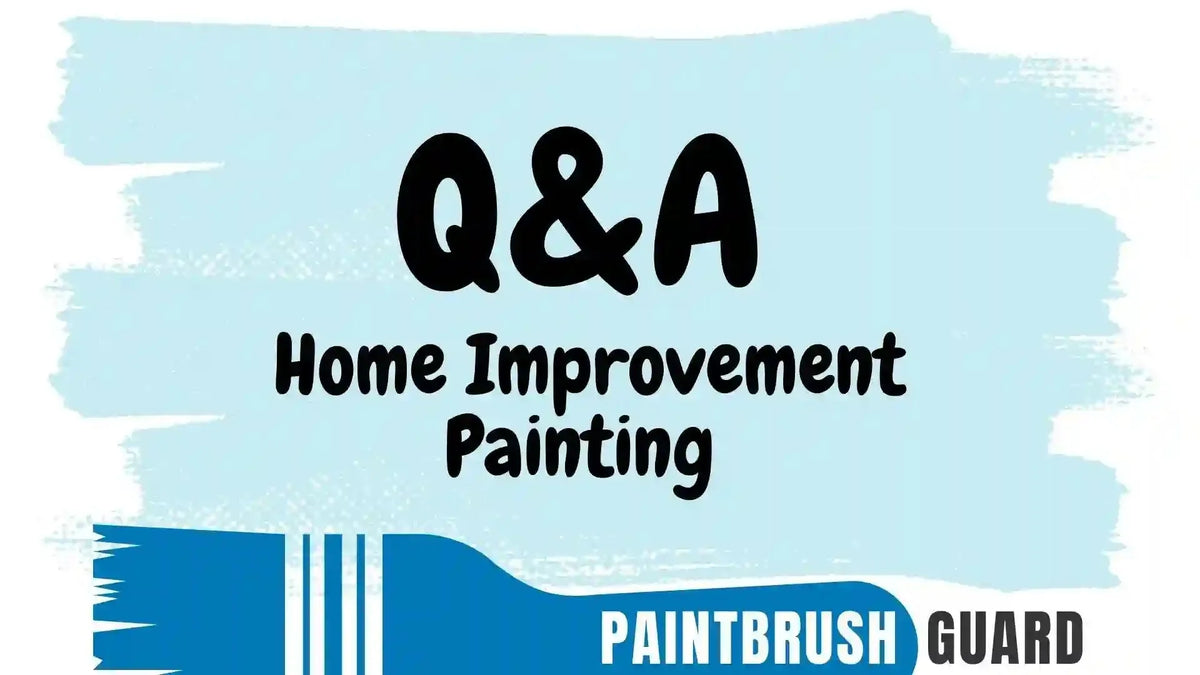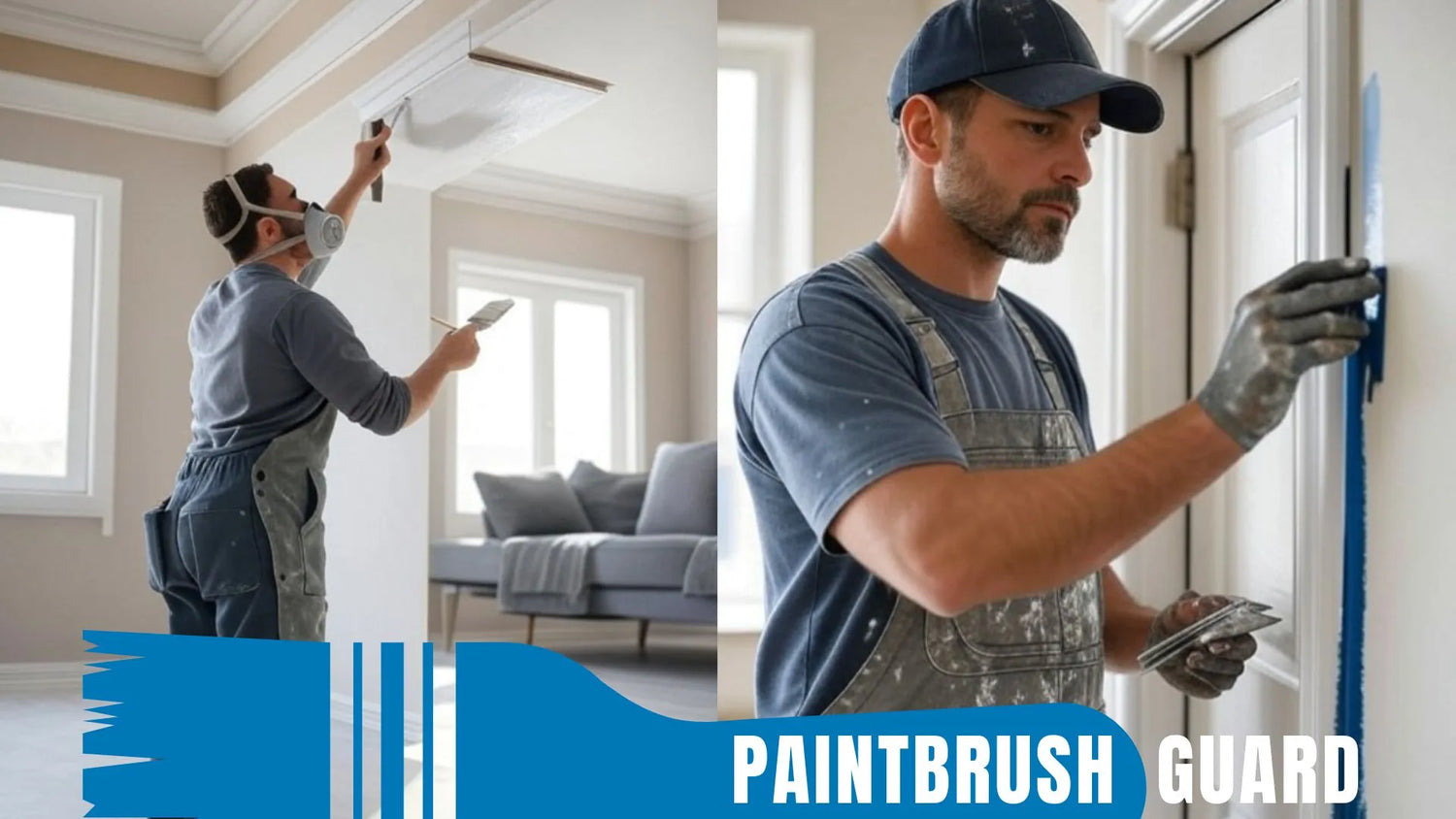
What Type of Paintbrush Is Best for Home Exterior Painting
|
Time to read 7 min
|
Time to read 7 min
Selecting the right paintbrush is essential for a professional finish, and understanding which type of brush is best for painting can elevate your exterior painting project.
Whether you’re tackling siding, trim, or doors, the brush type impacts application ease, coverage, and durability.
This in-depth article explores every aspect of preparing to choose which type of brush is best for painting, covering bristle types, sizes, surface compatibility, and more to ensure success for homeowners or professionals.
With no cleanup required after a painting session, you can take a short break mid-project or wrap up your painting for the day, your brush stays ready without the need to clean.
The question of which type of brush is best for painting is critical because the brush determines paint application quality, finish smoothness, and project efficiency.
A mismatched brush can cause streaks, bristle shedding, or uneven coverage, leading to rework that wastes time and materials.
Proper brush selection and preparation streamline which type of brush is best for painting decisions, ensuring a durable, polished exterior finish that withstands weather and wear.
Before deciding which type of brush is best for painting, consider the paint type, as it dictates bristle compatibility. Water-based paints (latex, acrylic) pair well with synthetic bristles like nylon or polyester, which resist swelling and maintain shape.
Oil-based paints work better with natural bristles, such as hog or ox hair, which hold more paint for a smoother finish. Specialty paints like stains or elastomeric coatings may require specific brushes.
Matching paint to brush type optimizes application and informs which type of brush is best for painting your exterior.
Learn more about Paintbrush Guard: This guide tackles the top 20 questions about storing paintbrushes, from quick breaks to long-term care, and even challenges like humid coastal areas.
The surface being painted significantly affects which type of brush is best for painting, as bristle type determines coverage and finish quality. Synthetic bristles (nylon, polyester) are ideal for smooth surfaces like metal, vinyl siding, or trim, offering precision and durability.
Natural bristles excel on rough surfaces like wood or brick, holding more paint but risking shedding on glossy finishes. Blended bristles (nylon-polyester mix) provide versatility for siding and trim, balancing smoothness and paint load.
Choosing the right bristle type ensures a professional which type of brush is best for painting outcome.
Brush size and shape are critical when determining which type of brush is best for painting specific exterior areas. For large surfaces like siding, use a 4-5 inch flat brush to cover more area quickly.
For trim, doors, or railings, a 1-2.5 inch angled sash brush offers precision in tight spaces. Round brushes work well for detailed work on spindles or curved surfaces.
Selecting the appropriate size and shape reduces application time and enhances which type of brush is best for painting efficiency.
Discover 4 best paint sprayers for exterior deck and large surfaces. Learn key features, tips, and maintenance for a durable, professional finish on your deck.
Paintbrush quality impacts which type of brush is best for painting, as high-quality brushes reduce bristle shedding and ensure smoother application.
Look for brushes with flagged (split) bristle tips for better paint release, a sturdy ferrule (metal band) to prevent bristle loss, and a comfortable, balanced handle for control.
Premium brushes from brands like Purdy or Wooster save time and deliver a superior which type of brush is best for painting finish, lasting multiple projects with proper care.
Surface preparation influences which type of brush is best for painting, as a well-prepped surface maximizes brush performance. Clean surfaces with a pressure washer or detergent to remove dirt, mildew, or grease.
Scrape and sand loose paint, then repair cracks or damage with filler or caulk. Prime bare or repaired areas to seal the surface. A smooth, clean surface ensures the chosen brush applies paint evenly, reinforcing which type of brush is best for painting effectiveness.
Read our exterior house painting guide: This mega guide gives you clear tips, tools and methods on how to paint all exterior surfaces on your home.
Weather affects which type of brush is best for painting, as extreme conditions can alter paint application and brush performance. Paint in temperatures between 50°F and 85°F with low humidity to prevent drying issues.
Avoid rain or high winds, which can cause debris to stick or paint to run. Synthetic bristles perform better in humid conditions, while natural bristles may swell, guiding which type of brush is best for painting based on weather forecasts.
Proper brush maintenance extends the life of your chosen tool, reinforcing which type of brush is best for painting over multiple projects.
Clean synthetic brushes with soap and water, and natural bristle brushes with mineral spirits, immediately after use. Comb bristles with a brush comb to remove dried paint, then reshape and store flat or hung.
Regular maintenance ensures your brush remains effective for which type of brush is best for painting future exteriors.
Discover 6 expert tips for exterior metal painting in coastal regions. Learn to combat rust with durable paints and prep techniques. Transform your home today!
Before committing to a brush, test it on a small area to confirm which type of brush is best for painting your specific project.
Apply a sample coat to check for streaks, bristle shedding, or ease of control. Adjust your choice if the brush doesn’t meet expectations, such as switching to a smaller size for detailed trim or a stiffer bristle for textured surfaces.
Testing prevents costly mistakes during which type of brush is best for painting your exterior.
By matching bristles to paint type, selecting the right size and shape, ensuring high quality, prepping surfaces, planning for weather, maintaining brushes, and testing them, you optimize your which type of brush is best for painting decision.
Start your exterior painting project with confidence, armed with the perfect brush for a stunning result.
Selecting the right paintbrush ensures smooth application, even coverage, and a durable finish for exterior painting. A mismatched brush can cause streaks, bristle shedding, or uneven coats, leading to rework and wasted materials, while the correct brush enhances efficiency and delivers a professional result.
Use synthetic bristles (nylon or polyester) for water-based paints like latex or acrylic, as they resist swelling and maintain shape. Natural bristles (hog or ox hair) are best for oil-based paints, offering a smoother finish. Specialty paints like stains or elastomeric coatings may require specific brushes for optimal application.
Synthetic bristles suit smooth surfaces like metal or vinyl siding, natural bristles work for rough surfaces like wood or brick, and blended bristles are versatile for siding and trim. Use 4–5-inch flat brushes for large areas, 1–2.5-inch angled sash brushes for trim or doors, and round brushes for detailed or curved surfaces.
High-quality brushes with flagged bristles, sturdy ferrules, and comfortable handles reduce shedding and ensure smooth application, lasting multiple projects. Clean synthetic brushes with soap and water, natural bristles with mineral spirits, comb to remove dried paint, and store flat or hung to maintain effectiveness for future exterior painting.
Clean surfaces with a pressure washer or detergent, scrape and sand loose paint, repair cracks, and prime bare areas for better brush performance. Test brushes on a small area to check for streaks or shedding, adjusting size or bristle type if needed, and paint in 50–85°F with low humidity to optimize results. Learn about brush maintenance Explore paint roller options
How Long Does Exterior Paint Last on Metal?
Learn how long exterior paint lasts on metal, factors affecting durability, and expert tips for preparation and maintenance to extend its lifespan.
8 Maintenance Tips for Exterior Brick Painting
Learn 8 maintenance tips for exterior brick painting durability. Discover how cleaning, inspections, and touch ups ensure your painted brick lasts for years.
Duration Exterior Painting: Prep Guide for Efficiency
Master duration exterior painting with this prep guide. Learn to inspect, clean, repair, and prime for a quick, lasting finish on your home’s exterior.
6 Fixes for Peeling Before Exterior Wood Painting
Discover 6 fixes for peeling before exterior wood painting. Learn how to scrape, sand, and prime wood for a smooth, durable painted finish.
Can You Paint Old Exterior Wood and How to Do It Right
Learn if you can paint old exterior wood. Discover why preparation prevents peeling, risks of skipping it, and tips for a durable, professional finish.
6 Tips for Exterior Concrete Painting in Wet Conditions
Learn 6 tips for exterior concrete painting in wet conditions. Discover how to choose paints, time applications, and ensure durability despite rain or humidity.
Can You Paint Straight Onto Exterior Brick? Risks and Best Practices
Painting directly on exterior brick is possible but risky without preparation. Learn why preparation is crucial, risks of skipping it, and tips for pro finish.
6 Ways to Patch Holes Before Exterior Concrete Painting
Discover 6 ways to patch holes before exterior concrete painting. Learn methods like vinyl patching or hydraulic cement for a smooth, durable painted finish.

Learn about eco-friendly painting, tips and tutorials on house interior and exterior surfaces, so you can get started with your project without any surprices during or after your painting.

Learn how interior house paint colors influence mood with expert tips on room preference so you can pick the best colors for a harmonious home environment.
We focus on the most popular shades for each interior colors, so you don't miss no matter what color you pick.

Learn how this innovative tool allows you to store paintbrushes without the need for immediate cleaning, offering significant advantages in time savings, water conservation, reduced chemical pollution, and lower costs for supplies.

